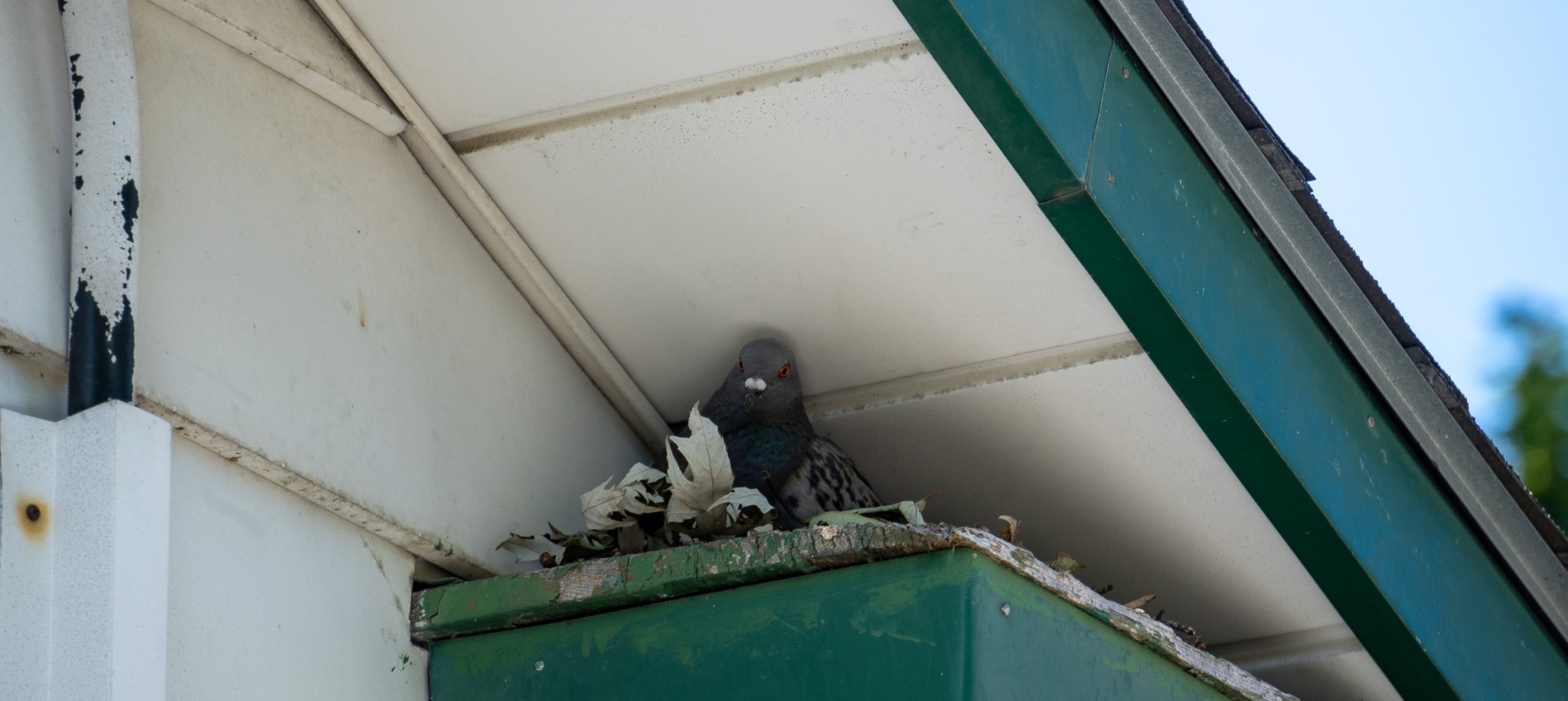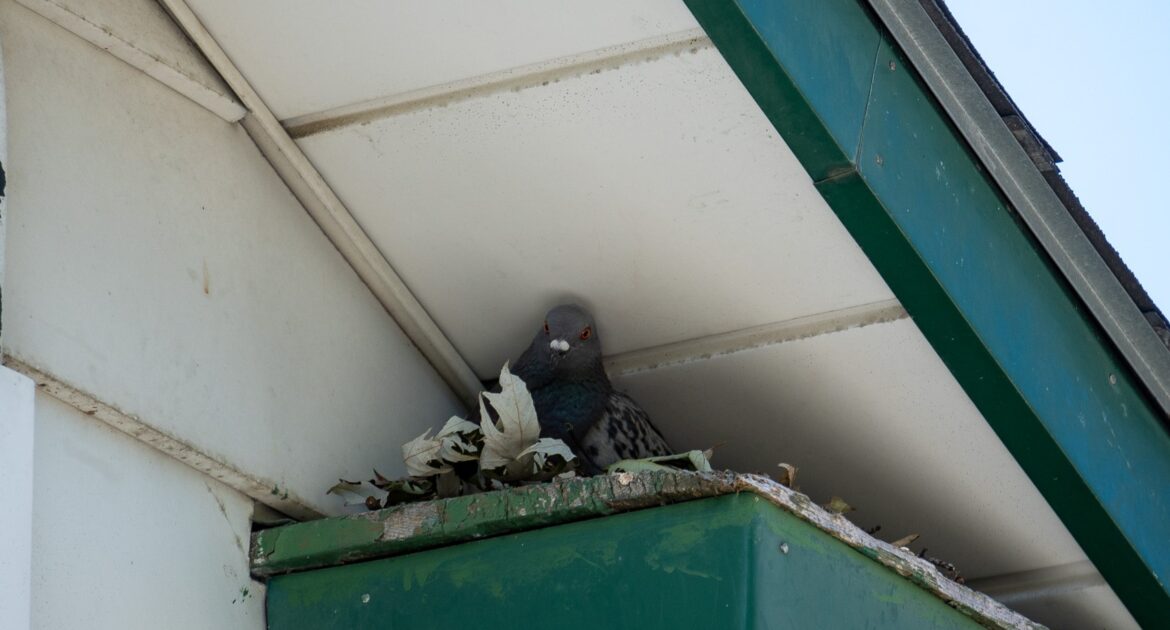Spring brings warmer days and blooming flowers, but it’s also nesting season for birds. Unfortunately, this can mean birds building nests in chimneys, roof eaves, or other openings in your home, leading to noise, damage, and unwanted messes.
The good news is you can prevent this with a few simple steps. By sealing openings, removing food sources, and using deterrents, you can keep birds from nesting in and around your home. If you need extra help, Skedaddle Humane Wildlife Control in Hennepin County offers safe and effective bird removal services. Read on for a step-by-step guide to bird-proofing your home this spring.
Seal Potential Entry Points
One of the easiest and most effective ways to stop birds from settling inside your home is by blocking off potential entry points. Birds are surprisingly resourceful and can squeeze into small spaces, such as vents, cracks, and gaps in your siding or roof.
Start by inspecting the exterior of your home. Look closely at chimneys, roof eaves, and attics for any openings that might look appealing to a bird searching for a nesting spot. Even small gaps should be sealed because birds can push through surprisingly tight spaces.
To block access, install strong, humane covers or screens over these areas. For example, chimney caps made of durable metal mesh can keep birds out without disrupting airflow. Similarly, you can use vent covers to ensure birds can’t make their way inside.
Taking these steps early in the season is key. The earlier you address potential entry points, the less likely birds will settle in for the spring. Once they build a nest, it becomes more difficult—and in some cases illegal—to remove them.
Remember, the goal is not only to protect your home from damage but also to do so in a way that doesn’t harm the birds. Humane prevention methods are not just effective; they’re also kinder and align with responsible wildlife practices.
Eliminate Food Sources
Birds are often drawn to areas where food is readily available. If your yard has easy access to scraps or spills, you could be unwittingly inviting them to stick around.
To make your property less appealing, start by securing your garbage bins with tight-fitting lids. Open trash cans or overflowing bags can be like a buffet. If you have compost piles, cover them properly to keep birds from scavenging for leftovers. Similarly, avoid leaving pet food outside. Uneaten kibble can be especially tempting, and it doesn’t take long for birds to catch on.
Another common mistake is leaving birdseed scattered around. If you enjoy feeding birds, keep feeders far away from your home and clear up any spillage regularly. While feeding backyard birds can be enjoyable, scattered food on the ground can attract more trouble than you bargained for.
Reducing food availability doesn’t require drastic changes to your routine, but it can significantly reduce the likelihood of birds getting too comfortable near your property.
Maintain Outdoor Spaces
A cluttered yard with long grass, overgrown shrubs, and piles of debris can be a haven for birds looking for a place to nest. By keeping your outdoor spaces clean and well-maintained, you can make your home less inviting.
Start with trees and shrubs. Trim back branches that hang too close to your home, as these can act like bridges for birds. Overgrown hedges can also provide hidden nesting spots, so regular maintenance is key. Clean up any piles of leaves, twigs, or fallen branches, which can act as a ready-made nesting supply station.
When your yard looks less like an all-you-can-nest area, birds are more likely to move on to other locations. Plus, keeping things tidy not only helps with bird prevention but also makes your home look even more inviting—to everyone except birds.
Use Humane Bird Deterrents
When it comes to keeping birds away from specific areas, humane deterrents are an excellent solution. They are simple to use, safe for birds, and cost-effective.
One visually effective option is reflective materials. Hanging items like wind spinners, shiny tape, or old CDs can catch the sunlight and create flashes that birds tend to avoid. Similarly, sound deterrents—devices that emit harmless but discouraging noises—are another great way to discourage birds from sticking around. These simple tools can create an environment that birds find unpleasant without causing them harm.
For architectural features like railings or ledges, consider installing slanted covers. Flat surfaces are prime spots for birds to perch or build nests, but a slanted design prevents them from getting comfortable.
Using these humane methods helps ensure your prevention efforts don’t harm wildlife, so you can keep your home bird-free with peace of mind.
Protect Specific Areas
Some areas of your home are more vulnerable to becoming bird nesting sites. By focusing on these high-risk spots, you can save yourself a lot of hassle later.
- Roof Eaves: Birds love tucking themselves into the sheltered spots under eaves. Cover these areas with fine mesh or netting to physically block access.
- Balconies: If you have a balcony, birds may see it as a perfect perch or nesting zone. Place scare devices, such as decoy predators, to discourage them from staying.
- Gardens: Birds often dig into gardens looking for seeds or insects. Protective netting over vulnerable plants can keep them at bay.
When you target the most problematic areas of your home, you can greatly reduce the chances of birds settling in. Simple solutions like netting and scare tactics go a long way in protecting your property.
Monitor for Early Signs of Nesting
Even with all these precautions, birds might still show interest in your property. That’s why it’s important to stay vigilant during the spring.
Keep an eye out for early signs of nesting activity, such as birds carrying twigs, droppings near a specific area, or hearing chirping noises where you typically wouldn’t.
- Nesting Materials: Look for small twigs, grass, or even feathers near potential nesting spots.
- Droppings: Increased bird droppings can indicate higher activity in a specific area.
- Foot Traffic: If you notice lots of birds flying near one place, they might be scouting for a home.
If you spot a nest that hasn’t yet been occupied by eggs, you can safely remove it. Just ensure you’re following local wildlife regulations, as laws often protect active nests. Early action prevents further damage and avoids the need for more complex solutions later.
Keep Your Home Bird-Free This Spring
Sometimes, no matter how much you prepare, these animals can become a persistent issue. When that happens, it’s best to call in the professionals. At Skedaddle Humane Wildlife Control in Hennepin County, we specialize in lasting, humane solutions for bird removal and prevention.
Our team uses effective techniques, like one-way doors, which allow birds to exit safely while ensuring they can’t come back. This ensures the problem is dealt with quickly while keeping the birds safe. Additionally, we know the ins and outs of local wildlife laws, so you can rest easy knowing everything is done correctly and responsibly.
Professional support can save you time, hassle, and potential risks. If you’re looking for a dependable way to safeguard your home, we’re here to help.
Call in Professionals for Long-Term Solutions
Spring is a season of growth and renewal, but it doesn’t have to include birds nesting in unwanted areas of your home. By taking steps like sealing up entry points, keeping your yard clean, reducing food access, and using humane deterrents, you can effectively keep birds from settling in. Acting early and staying vigilant makes all the difference and helps you avoid the headaches of a full-blown infestation down the road.
If you’re looking for expert help, Skedaddle Humane Wildlife Control is ready to assist. We specialize in safe, humane bird removal in Hennepin County, ensuring your home stays protected without causing harm to the wildlife around you. Don’t wait—contact us today for reliable solutions and enjoy a bird-free, worry-free spring!




